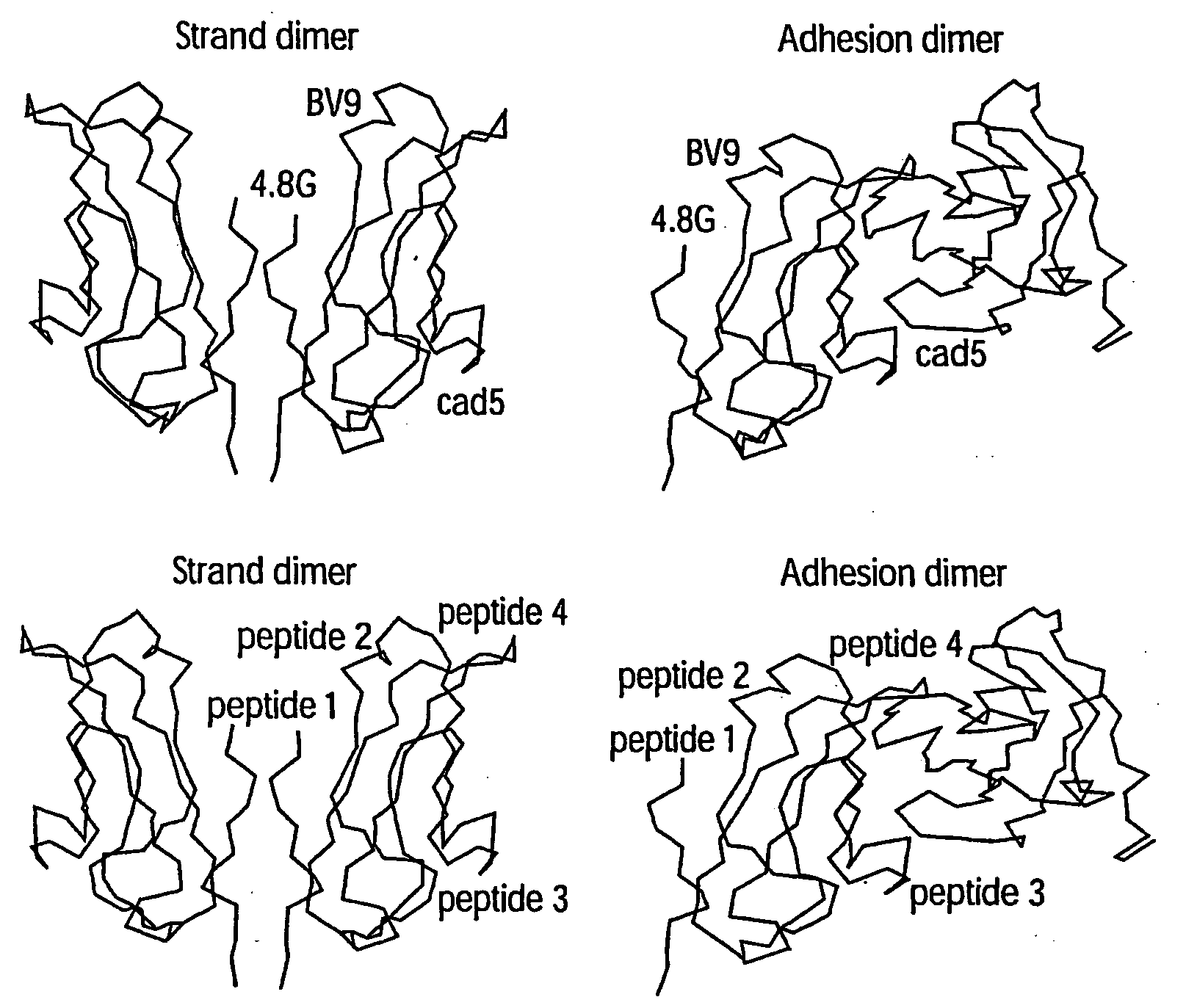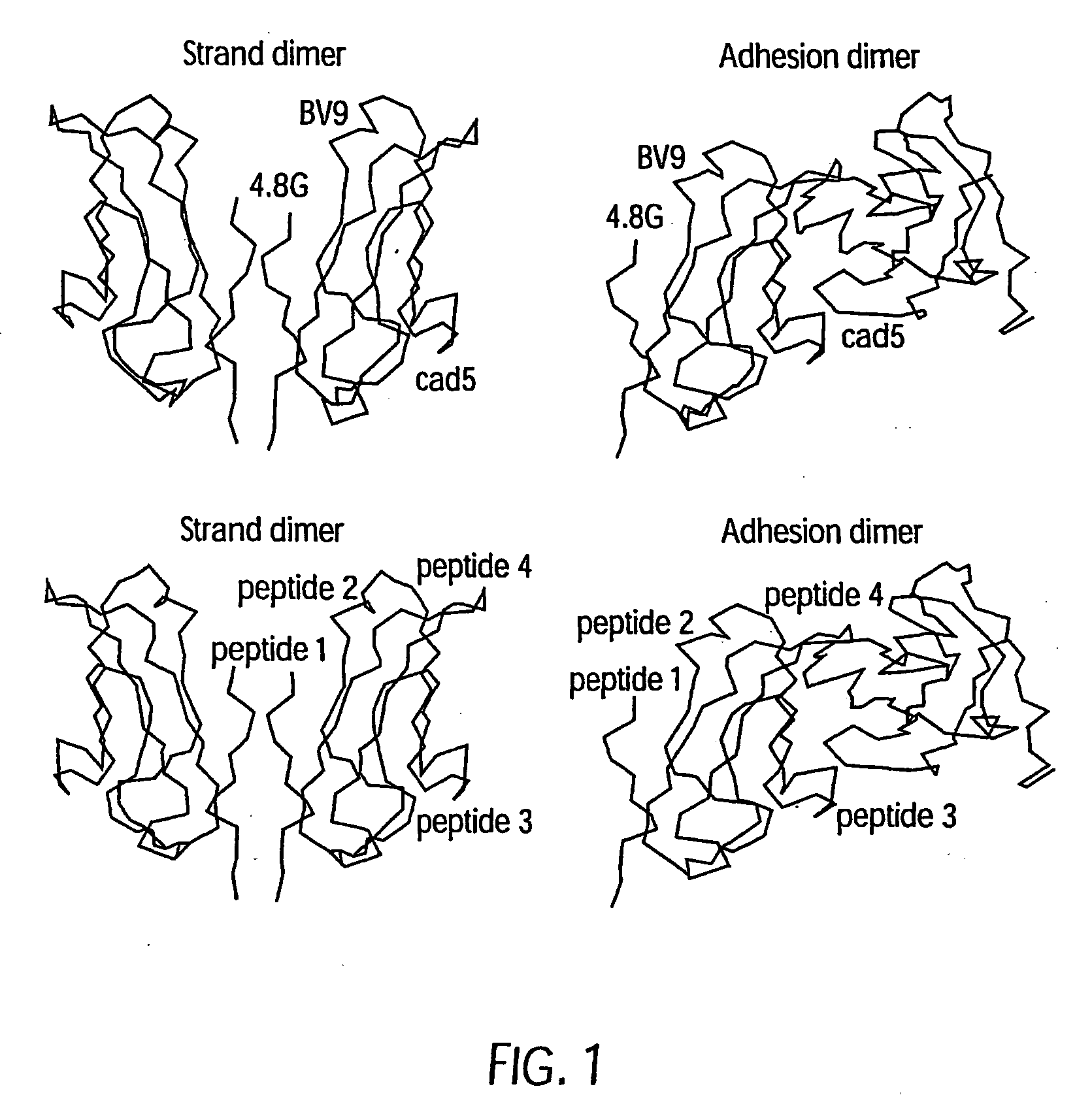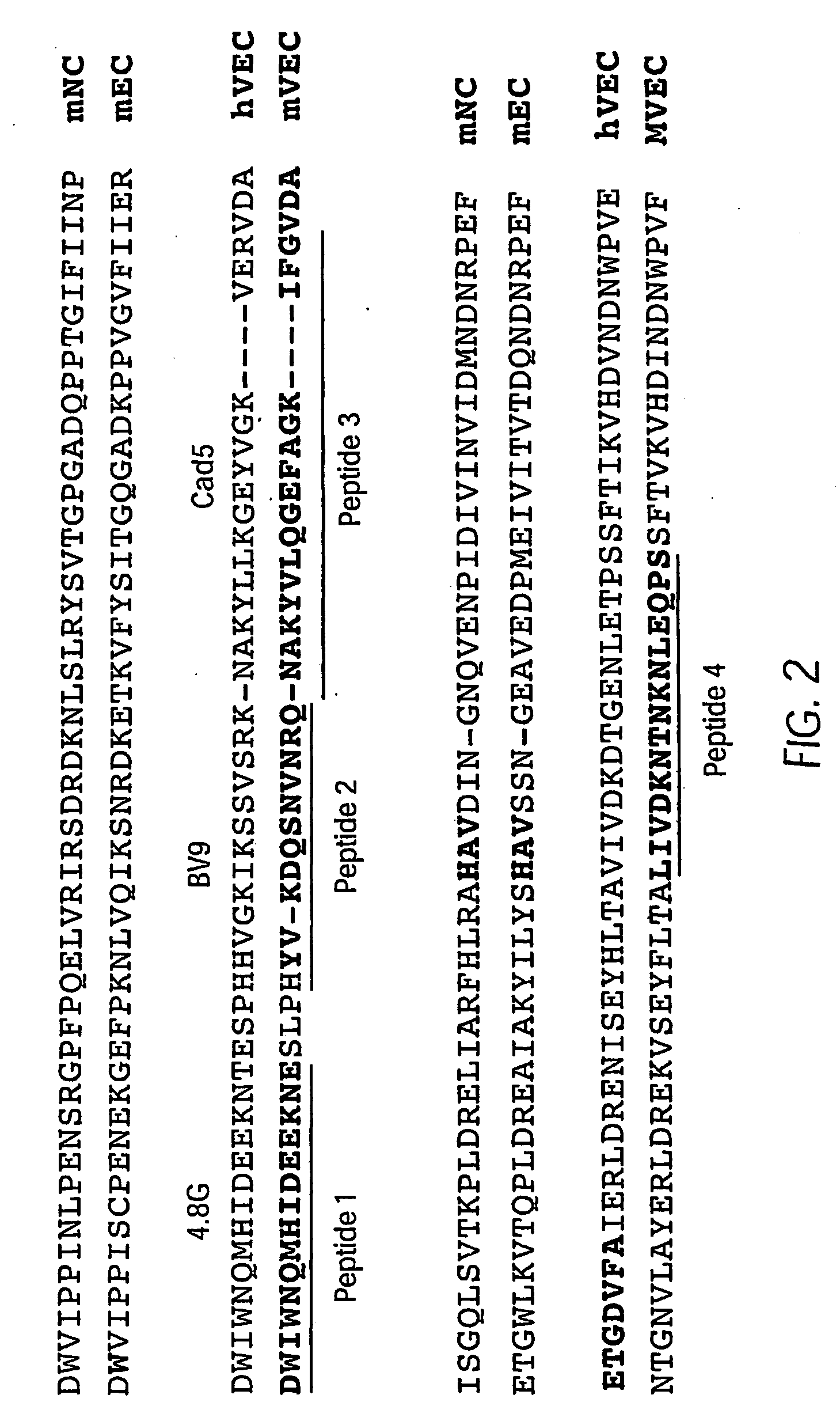Antibody antagonists of ve-cadherin without adverse effects on vascular permeability
a technology of vecadherin and anti-vecadherin, which is applied in the field of anti-vecadherin anti-antagonizers without adverse effects on vascular permeability, can solve the problems of vascular leak syndrome, hemorrhage and death, and disturbance of normal vasculature integrity
- Summary
- Abstract
- Description
- Claims
- Application Information
AI Technical Summary
Benefits of technology
Problems solved by technology
Method used
Image
Examples
example 1
Methods
[0078]Monoclonal Antibody Preparation: Lewis rats (6-8 week old females) were injected subcutaneously (s.c.) with 0.1 ml of protein or peptide mixed in Freund's complete adjuvant using a 25-gauge needle. Rats were boosted every 2-3 weeks with antigen and bled via the tail vein every week. After 3 booster immunizations or when sera titers reach maximal levels, mice were sacrificed by CO2 inhalation. Spleens were recovered from sacrificed animals for monoclonal antibody generation by conventional techniques.
[0079]Antibody Screening: Hybridoma supernatants were screened in by an enzyme-linked immunosorbent assay (ELISA) to identify antibodies which bound to VE-cadherin.
[0080]Junction Formation / Ca Switch Assay: The junction formation assay was developed based on a modification of the calcium switch assay (Gumbiner, B., & Simons, K., Cell Biol. 102:457-468 (1986)). Transfectant CHO cells or endothelial cells expressing VE-cadherin are plated onto glass slides and allowed to form a...
example 2
VE-Cadherin Monoclonal Antibodies That Inhibit Adherens Junction Formation Without Disrupting Existing Junctions
[0084]Two groups of Lewis rats were immunized with either a mixture of four KLH-coupled peptides having sequences from the N—terminal domain 1 of murine VE-cadherin (FIG. 2) or with affinity-purified soluble mouse VE-cadherin (smVEC-Ig) which had been expressed in CHO cells. This immunogen encompasses the entire extracellular region of mouse VE-cadherin fused to human Fc chain. The resulting hybridoma clones were tested for production of antibodies with binding activity to VE-cadherin using a conventional ELISA format. This screening identified twenty (20) rat anti-murine VE-cadherin antibodies, 10 from each of the originally immunized groups of rats.
[0085]Several properties of these monoclonal antibodies were examined and the results are summarized in Tables 1 and 2.
[0086]The 20 candidate VE-cadherin antibodies were tested in the “calcium-switch” and “permeability” assays...
example 3
E4B9 Cross Reacts with Human VE-Cadherin
[0087]The murine epitope sequence recognized by antibody E4B9 shares 100% homology with human VE-cadherin, so this antibody was examined to determine if it cross-reacts with human VE-cadherin. Western-blot analysis of several VE-cadherin expressing human and murine cell indicated that E4B9 indeed cross-reacts with human VE-cadherin (FIG. 6). This finding facilitates development of a “humanized” E4B9 antibody and its success in the preclinical development since its anti-tumor activity can be tested extensively in several mouse models.
PUM
 Login to View More
Login to View More Abstract
Description
Claims
Application Information
 Login to View More
Login to View More - R&D
- Intellectual Property
- Life Sciences
- Materials
- Tech Scout
- Unparalleled Data Quality
- Higher Quality Content
- 60% Fewer Hallucinations
Browse by: Latest US Patents, China's latest patents, Technical Efficacy Thesaurus, Application Domain, Technology Topic, Popular Technical Reports.
© 2025 PatSnap. All rights reserved.Legal|Privacy policy|Modern Slavery Act Transparency Statement|Sitemap|About US| Contact US: help@patsnap.com



